Latest DePIN Funding News

2 months ago
Web3Bay's Successful Presale and Innovations in Crypto Market
In the ever-changing landscape of the cryptocurrency market, Cardano and Filecoin are demonstrating remarkable resilience and innovation. Cardano has experienced a significant price increase this year, reflecting strong market momentum, even as it recently dipped to $1.064. Analysts remain optimistic, predicting that the price could soar to $6 due to ongoing developments and heightened adoption. Meanwhile, Filecoin is making strides in the decentralized storage sector with its latest upgrades, including the "Waffle" upgrade, which enhances performance and compatibility with Ethereum. These advancements not only bolster Filecoin's interoperability but also broaden its appeal within the Web3 ecosystem, attracting developers and businesses alike.
Amidst these developments, Web3Bay (3BAY) has made headlines by successfully raising $830,000 in its latest presale, solidifying its position as a top investment choice during the current bull run. The platform aims to revolutionize the $5 trillion e-commerce industry by leveraging blockchain technology to improve transaction efficiency and user privacy. Central to Web3Bay's strategy is the 3BAY token, which offers a 5% discount on purchases and governance rights. The presale has already sold 220 million coins at a starting price of $0.004562625, with expectations of substantial price increases as new features like NFT integration and cross-chain capabilities are introduced.
As Web3Bay continues to evolve, it is set to launch innovative features that will further transform the e-commerce landscape. The project's commitment to transparency and user empowerment through blockchain technology is attracting a diverse range of supporters, reinforcing its status as a leader in the digital commerce revolution. With Cardano's inclusion in Robinhood enhancing its accessibility and Filecoin's strategic upgrades solidifying its market position, the future looks promising for these projects. Web3Bay, in particular, stands out as a compelling opportunity for investors seeking to engage with a robust, growth-oriented crypto initiative in the decentralized commerce space.

2 months ago
Karrier One: Revolutionizing Telecom and Financial Inclusion Through Decentralization
In the past 150 years, telecommunications has played a crucial role in connecting humanity. However, its function has become increasingly limited to mere communication, while financial systems have developed independently. Karrier One aims to change this narrative by introducing decentralized telecom innovations that integrate connectivity with financial services. Their vision transforms every connected device into more than just a communication tool; it becomes a bank, a digital identity hub, and a gateway to new opportunities. This initiative is not merely about enhancing telecom or financial services but about creating a cohesive system that empowers individuals and communities through connectivity and financial inclusion.
A significant challenge remains in the fact that 1.7 billion adults globally are unbanked, despite billions using mobile devices daily. Karrier One sees telecom as the missing link to bridge this gap. By utilizing its decentralized platform, every device connected to its network can act as a financial node, facilitating secure transactions and providing access to essential financial tools like microfinance. This innovation is particularly transformative in regions with limited banking infrastructure, allowing individuals to bypass systemic barriers and access opportunities that were previously unattainable, effectively turning a simple phone into a bank.
Central to Karrier One's approach is the Decentralized Physical Infrastructure Networks (DePIN) model, which empowers communities to create and manage their own telecom networks. This model not only reduces costs but also expands access to underserved areas, fostering resilience and local ownership. The Middle East and North Africa (MENA) region stands to gain significantly from this decentralized telecom innovation, as it addresses connectivity gaps and financial exclusion. By integrating financial services into connectivity solutions, Karrier One is not just offering technology; it is providing a lifeline for full participation in the modern economy. As telecom and finance converge, Karrier One invites investors and telecom operators to join this revolutionary movement, emphasizing the importance of integration and empowerment in shaping the future of connectivity and finance.

2 months ago
Ether Reclaims $2,000 Support Amid Upcoming Pectra Upgrade
On March 24, Ether (ETH) managed to reclaim the $2,000 support level, although it remains 18% below the $2,500 mark seen three weeks prior. Recent data indicates that Ether has underperformed the altcoin market by 14% over the last month, prompting traders to speculate on its ability to regain bullish momentum. The Ethereum ecosystem has faced criticism for lagging behind competitors in user experience and scalability, which has negatively impacted network fees and transaction efficiency. The upcoming Pectra network upgrade, scheduled for late April or early June, aims to address many of these challenges by doubling the data capacity of each block and introducing smart accounts that enhance transaction functionalities.
The Pectra upgrade is expected to bring significant improvements, including reduced fees for rollups and privacy mechanisms, as well as increased flexibility for staking deposits and withdrawals. Arthur Hayes, co-founder of BitMEX, recently set a price target of $5,000 for ETH, asserting that it should outperform Solana (SOL). However, the sentiment among ETH options traders appears less optimistic, as indicated by the low cost of call options with high strike prices. Despite this, Ethereum continues to lead in smart contract deposits and is the only altcoin with a spot exchange-traded fund (ETF) in the US, currently managing $8.9 billion in assets.
Ethereum's total value locked (TVL) stands at $52.5 billion, significantly higher than Solana's $7 billion, with a 10% increase in deposits over the past month. The Ether supply on exchanges has also decreased, suggesting a long-term commitment from investors. Additionally, the Ethereum network is gaining traction in the Real World Asset (RWA) sector, further solidifying its dominance in decentralized finance (DeFi). Although Ether's price dipped below $1,900 earlier this month, the recent trends indicate a potential rally towards the $2,500 mark as traders continue to withdraw from exchanges, reflecting a more bullish outlook for the asset.

2 months ago
Top 10 DePIN Coins to Watch in 2025
Decentralized Physical Infrastructure (DePIN) is rapidly emerging as a significant trend in the cryptocurrency landscape, particularly as we look towards 2025. By merging blockchain technology with tangible infrastructure, DePIN projects are providing distinct advantages for both consumers and producers, thus attracting the attention of innovators and investors. This article highlights the top 10 DePIN coins to monitor in 2025, which are distinguished by their robust market capitalizations and promising price trajectories, making them key players in this evolving sector.
Among the top contenders is Helium (HNT), which has garnered considerable interest from traders and long-term holders. Recent technical analysis indicates that HNT has formed a bullish harami candlestick pattern on the 200 Exponential Moving Average (EMA), suggesting a potential price surge of 30% towards $8.5. Similarly, Filecoin (FIL) is showing signs of recovery after a significant decline, with analysts predicting a possible rally of 65% if it maintains support above $4.90. Theta Network (THETA) and Internet Computer (ICP) are also positioned for potential upside, with THETA needing to break above $2.45 for a 36% increase, while ICP could see a 55% rise if it stays above $9.5.
Other notable mentions include IOTA, which has recently experienced a price correction but may rebound if it holds above $0.28, and Render (RENDER), which is poised for a breakout above $7.22. Additionally, Arweave (AR), Akash Network (AKT), AIOZ Network (AIOZ), and Hivemapper (HONEY) are all showing signs of potential growth, with analysts optimistic about their future price movements. As we approach 2025, these DePIN coins present substantial growth opportunities, particularly if favorable market conditions prevail, potentially delivering notable returns for investors.
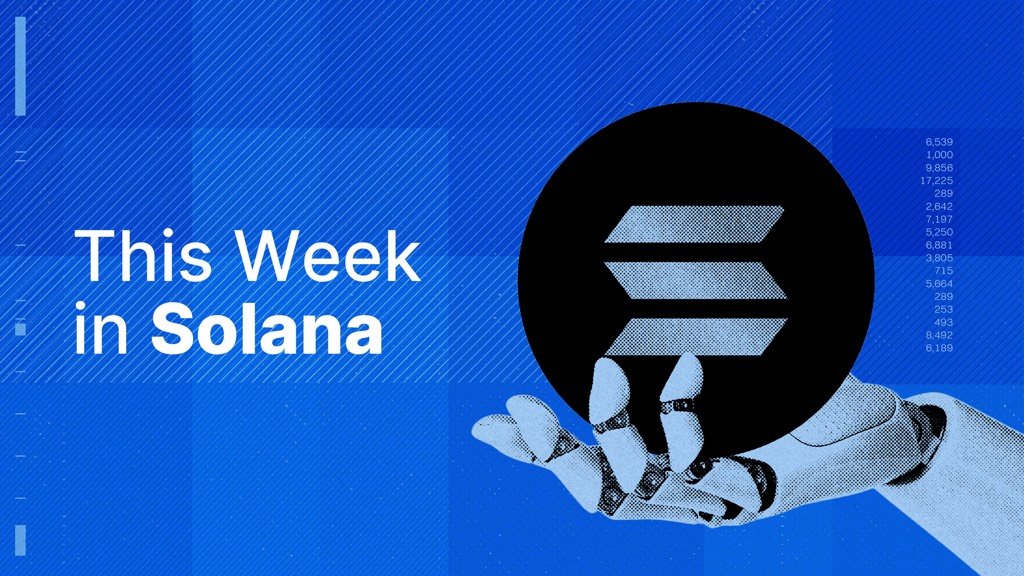
2 months ago
Solana's Remarkable Rebound: Price Surge and Ecosystem Developments
In the past week, Solana has experienced a significant rebound, with its price surging 12% to reach $140. This uptick in value comes amid renewed market optimism, spurred by the Trump administration's softened stance on tariff negotiations and the U.S. Federal Reserve's decision to maintain interest rates. The total value locked (TVL) in Solana's ecosystem has also risen to an impressive $72 billion, reflecting growing confidence among investors. Notably, Solana's stablecoin supply has hit record levels, surpassing $12.8 billion, indicating robust liquidity and adoption within the network.
In ecosystem developments, Pump.fun has launched its decentralized exchange (DEX), PumpSwap, which aims to streamline trading for Solana meme coins. This move has prompted Raydium to introduce LaunchLab, a platform designed to compete with Pump.fun and retain its market share. Additionally, Volatility Shares has debuted two funds tracking Solana futures, SOLZ and SOLT, providing investors with new avenues for exposure to the layer-1 network. As institutional interest grows, Fidelity has registered the "Fidelity Solana Fund," potentially paving the way for a Solana ETF, which could further enhance market dynamics.
Despite the positive trends, Solana's decentralized exchange volume has seen a decline, dropping 20% to $8.06 billion. However, the overall market sentiment remains bullish, with Solana outperforming its rivals, including Ethereum and Bitcoin. The ecosystem's market cap has increased by 10%, and daily active addresses have risen to over 3.8 million. As Solana continues to innovate and attract attention, the coming weeks will be crucial in determining its trajectory in the competitive blockchain landscape.
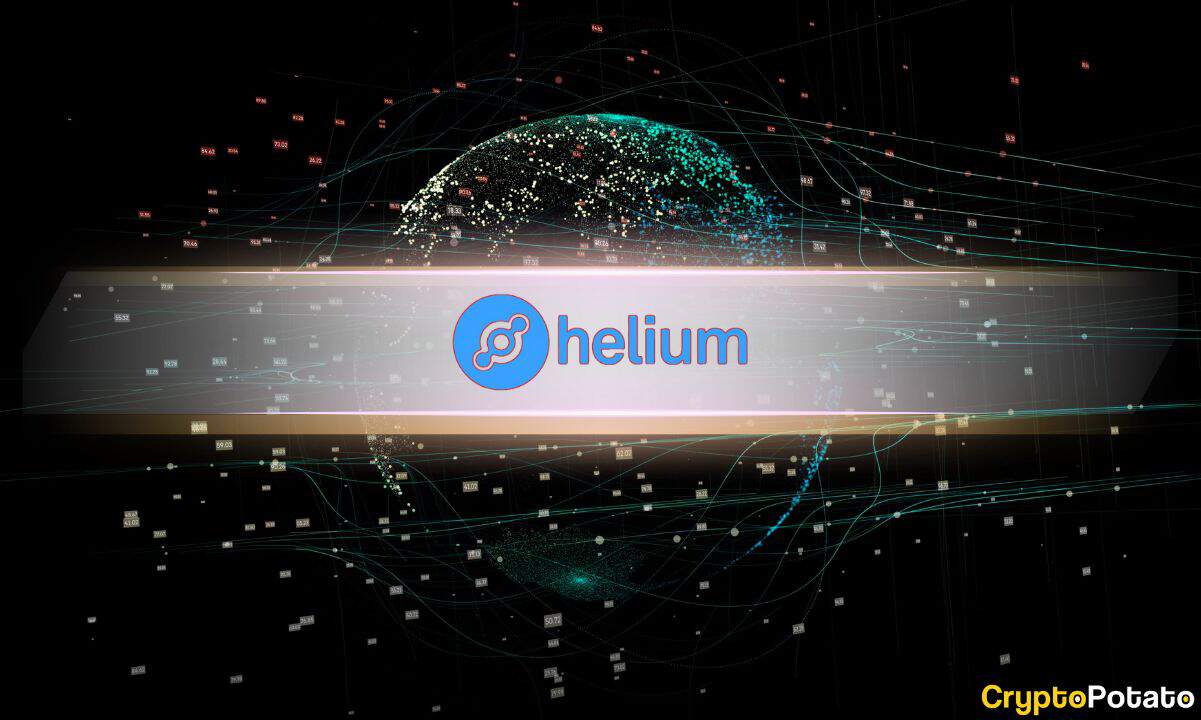
2 months ago
Helium Network Expands Despite Token Decline and Past Controversies
In the fourth quarter, Helium's native token, HNT, experienced a significant decline, with its circulating market capitalization dropping from $1.3 billion to $1.0 billion, marking a 20% quarter-over-quarter decrease. The token's price also fell by 22%, decreasing from $7.54 to $5.88. Despite this downturn in the market, the Helium network continued to expand, particularly in the area of hotspot adoption. According to a report from Messari, Helium Mobile's number of hotspots grew by 14% QoQ, reaching 24,800 from 21,800. The service's unlimited plans remain competitively priced compared to traditional telecom providers in the US, and the introduction of the Discovery Mapping feature has incentivized users to share location data, although rewards have recently shifted from HNT to Cloud Points.
During the recent Hurricane Helene in North Carolina, Helium Mobile showcased its utility by maintaining operational hotspots that provided 5G coverage while many were left without electricity or water. The team also took proactive measures by distributing emergency kits, including Starlink devices, to assist affected communities. In addition to Helium Mobile, the IoT network also saw a 20% increase in hotspots during Q4, with a total of over 375,000 hotspots onboarded since migrating to Solana in early 2023. However, despite rapid infrastructure growth, demand has not yet caught up, as evidenced by low daily data credits (DC) usage.
Helium has faced controversies in the past, including allegations that its founders hoarded a significant portion of early token rewards, with insiders reportedly mining millions of HNT tokens worth $250 million at their peak. Additionally, Helium faced criticism for overstating partnerships, such as with Lime, the rideshare company, which clarified that their relationship was limited to a 2019 test. Similar issues arose with Salesforce, which denied any partnership, leading Helium to remove their logos from promotional materials. These controversies have raised questions about the company's transparency and the sustainability of its growth strategies.

2 months ago
Solana DePIN Sees Significant Growth Amidst Meme-Coin Decline
In February, the decentralized physical infrastructure network (DePIN) associated with Solana [SOL] experienced a notable rebound, driven by significant user growth in key projects such as Helium and Hivemapper. Helium Mobile reported a remarkable ninefold increase in users, reaching 145,000, marking its highest growth in a year. Hivemapper, a community-driven alternative to Google Maps, also saw its demand triple due to the introduction of new mapping devices. Collectively, these projects maintained steady revenues of approximately $350,000, indicating a stabilization in the DePIN sector for 2025.
The resurgence of DePIN could potentially serve as a catalyst for SOL's value, especially following a significant decline in meme-coin activity that adversely affected Solana's decentralized exchange (DEX) volumes. In January, during the peak of DEX activity, SOL reached a record high of $295, largely fueled by the excitement surrounding the TRUMP memecoin. However, a subsequent 60% drop in DEX volumes led to a decline in SOL's value, which has since stabilized above the $120 support level. The question remains whether DePIN can fill the void left by meme coins and bolster SOL's value moving forward.
Despite the resurgence of DePIN, the overall network activity within the Solana ecosystem remains heavily influenced by meme coins. Active addresses surged to 5.7 million during the TRUMP meme-coin craze in mid-January but saw a decline throughout February. Although there was a slight increase in active addresses to 4.4 million, this was followed by a drop to 2.7 million by the end of the month. By mid-March, the number of active addresses stabilized at 3.11 million, reflecting a 45% decrease from January's peak. As of now, SOL is valued at $130, maintaining its position above the critical 2024 support zone, leaving uncertainty about whether it can avoid further corrections.
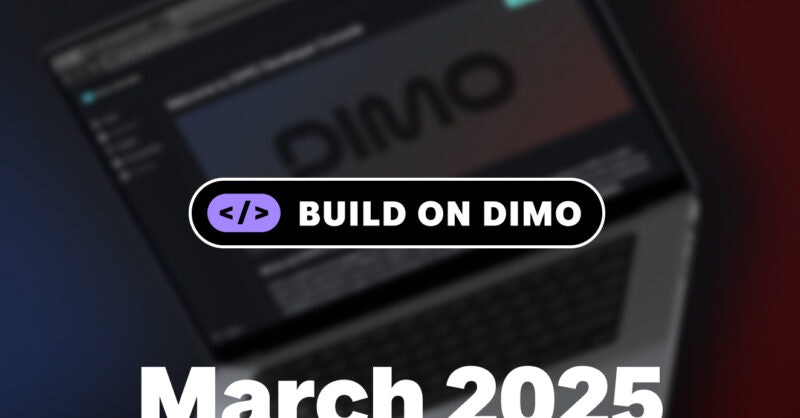
2 months ago
DIMO Developer Ecosystem Blooms with New Features and Updates
Spring has arrived, bringing a wave of innovation to the DIMO Developer ecosystem. With over 250 developer licenses minted, the platform is witnessing a surge in app launches and builder updates. Recent enhancements to the Data SDKs, including new functions for retrieving vehicle data and streamlined token exchanges, aim to simplify the development process. The naming conventions have also been updated for clarity, making it easier for developers to access privileged vehicle data without excessive boilerplate code.
In an exciting development, DIMO has officially begun support for Tesla Streaming as of March 1st. This feature allows developers to access real-time data from Tesla vehicles down to the second, a significant improvement from the previous five-minute interval data. However, it's important for developers to note that this feature is only available to Tesla drivers who have reconnected their vehicles with the DIMO mobile app and added a Virtual Key. This update opens new avenues for applications that require immediate and detailed data from Tesla vehicles.
Additionally, the DIMO Developer Console is set to undergo significant changes, including the consolidation of multiple apps under individual developer licenses. This update will streamline the user experience, allowing developers to manage their applications more efficiently. Furthermore, a redesign of the Developer Console is on the horizon, featuring an improved onboarding experience, a cleaner purchase process, and new integration options. These enhancements are designed to foster a more supportive environment for builders, ensuring they have the tools they need to succeed in their projects. Developers are encouraged to engage with the community and explore funding opportunities through the DIMO Ignite Grants Program as they embark on their building journeys.
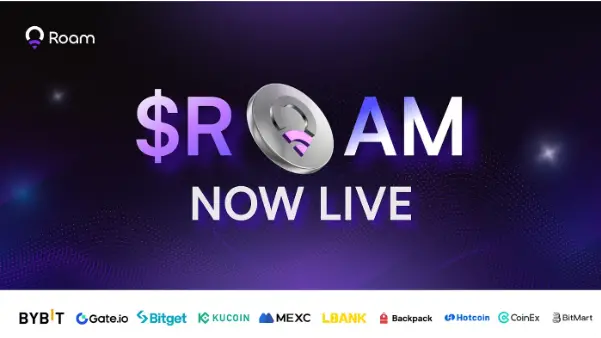
2 months ago
Roam: Pioneering the DePIN Track in Web3 Integration
In 2025, the DePIN track is emerging as a vital link between Web3 and real-world applications. According to the "DePIN Annual Report" by Messari, over 13 million DePIN devices are currently operational globally, contributing to infrastructure networks. Despite being in its infancy and representing less than 0.1% of the trillion-dollar terminal market, DePIN has attracted more than $350 million in early funding. As the on-chain battle intensifies in 2024, Solana is leading the charge in network infrastructure, while ROAM has gained significant traction with nearly 3 million WiFi nodes and 2.5 million users, showcasing its rapid growth and community engagement.
Roam's impressive expansion is attributed to its integration of OpenRoaming technology and blockchain DID/VC technology, alongside a business model that combines free eSIM services with token incentives. This approach not only broadens its wireless network reach but also facilitates user entry into the Web3 ecosystem, offering continuous income opportunities. The recent launch of the ROAM token on 12 exchanges, including Bybit and Bitget, saw a remarkable trading volume of $120 million on its first day, establishing it as a leader in decentralized wireless networks. Roam's unique dual deflationary economic model further enhances its revenue potential, shifting focus from supply-side growth to demand-side exploration.
Looking ahead, Roam is poised to solidify its position in the DePIN track through innovative applications and robust token economics. The upcoming use cases for ROAM tokens in gaming centers and credit card transactions will enhance user engagement and token consumption. With a total supply of 1 billion tokens and a strategic dual deflationary mechanism, Roam aims to create scarcity and drive long-term value. As it continues to expand its global open wireless network, Roam exemplifies the potential of decentralized technologies in shaping the future of connectivity and AI development, warranting close attention from the blockchain community.
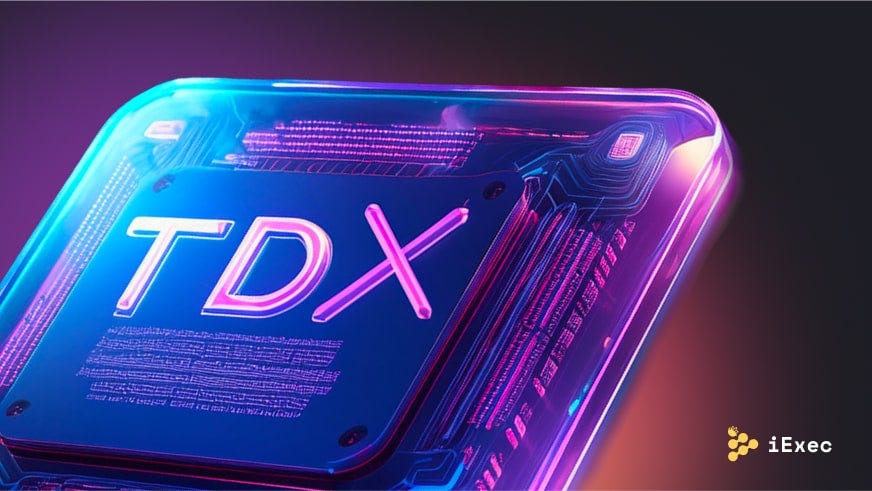
2 months ago
Revolutionizing Confidential AI with Intel TDX and iExec
The landscape of Confidential AI is undergoing a significant transformation, primarily driven by the introduction of Intel® Trust Domain Extensions (Intel® TDX). For years, developers faced challenges when trying to secure AI workloads using Intel SGX, which often required extensive modifications to applications and led to compatibility issues. This cumbersome process not only wasted time but also hindered the real-world adoption of Confidential AI solutions. However, with Intel TDX, developers can now run AI workloads in secure virtual machines without needing to rewrite their code, thereby streamlining the development process and enhancing performance.
Intel TDX is designed to create a hardware-isolated trusted execution environment (TEE) that enhances data confidentiality and integrity in virtualized environments. Built into Intel’s 4th Generation Xeon® Scalable processors, TDX introduces Trust Domains that isolate virtual machines from the hypervisor and even cloud service providers. This isolation is crucial for AI applications that handle sensitive datasets and proprietary models, as it significantly reduces the attack surface while maintaining high performance. Additionally, TDX is optimized for AI workloads, leveraging advanced CPU capabilities to accelerate deep learning and machine learning models, making it a robust choice for developers.
The collaboration between Intel TDX and iExec is paving the way for a new era of Confidential AI. As a Gold Member of the Intel Partner Alliance, iExec is at the forefront of this movement, providing solutions that enable secure, decentralized, and scalable execution of AI workloads. This partnership not only enhances the security of AI computations but also ensures compliance with data protection regulations. With practical applications in sectors like healthcare and finance, iExec empowers developers to build privacy-preserving AI applications that prioritize data ownership and secure computing, ultimately leading to a more trustworthy AI ecosystem.
Signup for latest DePIN news and updates